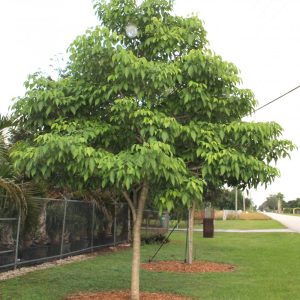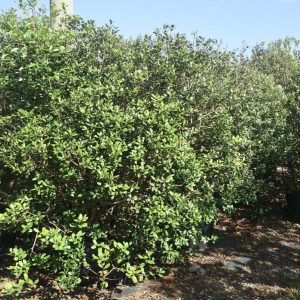Description
Erblichia odorata, also called the Butterfly Tree, is a beautiful flowering tree that is native to Belize, Costa Rica, El Salvador, Guatemala, Honduras, Mexico, Nicaragua, and Panama, among other places. This tree species can grow up to a maximum height of 30 to 40 feet, making it an ideal choice for medium-sized landscapes.
Flowering and Foliage of Erblichia Odorata
The Butterfly Tree (Erblichia odorata) is classified as an evergreen tree. This tree’s trunk is typically straight and cylindrical and can reach a diameter of 8 to 23 inches. With wrinkled brown-grayish bark and brownish-yellowish young branches that are somewhat drooping. The leaves are simple, oblong-lanceolate shapes with a crenate-serrated edge and a petiole that is 2 to 5 inches long. They have a glossy, vivid green color on top and are glabrous or pubescent on the bottom. Alternatingly growing along the branches to give off a lush, tropical vibe. In addition, the Butterfly Tree’s (Erblichia odorata) stunning flowers are the main attraction and the reason for its popularity. In the late winter and early spring, the tree blooms, bringing out fragrant blossoms that resemble butterflies. These blooms are produced on single axillaries, which are 2.5 to 3 inches long, and 5 to 7 inches in diameter. The flowers have five petals in an oval to oblong shape and a golden-yellow to reddish-orange color, making them an attractive addition to any landscape. Finally, after the flowering season, the butterfly tree produces small, brown, woody fruits that contain seeds. These fruits are not edible and may not be the most attractive aspect of the tree, but they do provide food for wildlife.
Soil Type and Plant Requirements of the Butterfly Tree
The Butterfly Tree prefers well-drained soils that are slightly acidic and loamy, similarly to the Handroanthus Pentaphylla tree. It grows best in full sun or partial shade, and it thrives in warm, humid conditions. The tree does best in USDA Zones 10–11 and is highly tolerant of salt spray and drought conditions. It is easy to take care of because it only needs to be pruned every so often to keep its shape and get rid of dead or damaged branches.
Landscape Applications of the Erblichia Odorata Tree
Moreover, the Butterfly Tree (Erblichia odorata) is an excellent choice for a wide range of landscape applications. Including as a specimen tree or even in a mixed border planting. It is highly recommended for its stunning floral display and relatively low maintenance. In South Florida, this species performs exceptionally well. Making it a popular choice among landscape architects, tree nurseries, and tree lovers alike.
Erblichia odorata (Butterfly Tree) in Florida
Overall, the Erblichia odorata tree is a popular flowering species that widely grown in South Florida and Caribbean landscapes, so you can easily find it in various public and private gardens, parks, and residential landscapes throughout the region. You can easily spot the Butterfly Tree in Miami-Dade County, Florida’s Fairchild Tropical Botanic Garden. As one of the many tropical plants featured in this garden. Another popular location to find Erblichia odorata is Pinecrest Gardens, a popular public park in Miami-Dade County. Moreover, it performs great in other South Florida counties, such as Broward and Palm Beach. And a common sight in the landscapes of Boca Raton, Delray Beach, and Fort Lauderdale.























